Black Rot of Grape
Return to Diseases
Black rot (Phyllosticta ampelicida, syn. Guignardia bidwellii) is a fungal disease that primarily affects leaves and berries. Leaf infections cause brown to tan circular spots up to ½ inch diameter with visible black specks (pycnidia) around perimeters of lesions. Infected shoots, cluster stems (rachises), and tendrils develop purple to black sunken lesions with visible pycnidia. Spores (conidia) from pycnidia spread by splash and can cause secondary infections throughout the growing season. Conidia can continue to infect berries for 2 to 4 weeks after bloom. Fruit infections appear as light brown spots, which can have visible pycnidia on the surface. Entire berries usually turn brown, shrivel rapidly, and become hard and black. They remain on the rachis as “mummies” during the winter. The fungus overwinters as fruiting structures (pseudothecia) in the mummies and on canes. Spores (ascospores) are released in spring soon after budbreak when shoots are approximately 1 inch long (hard green stage).
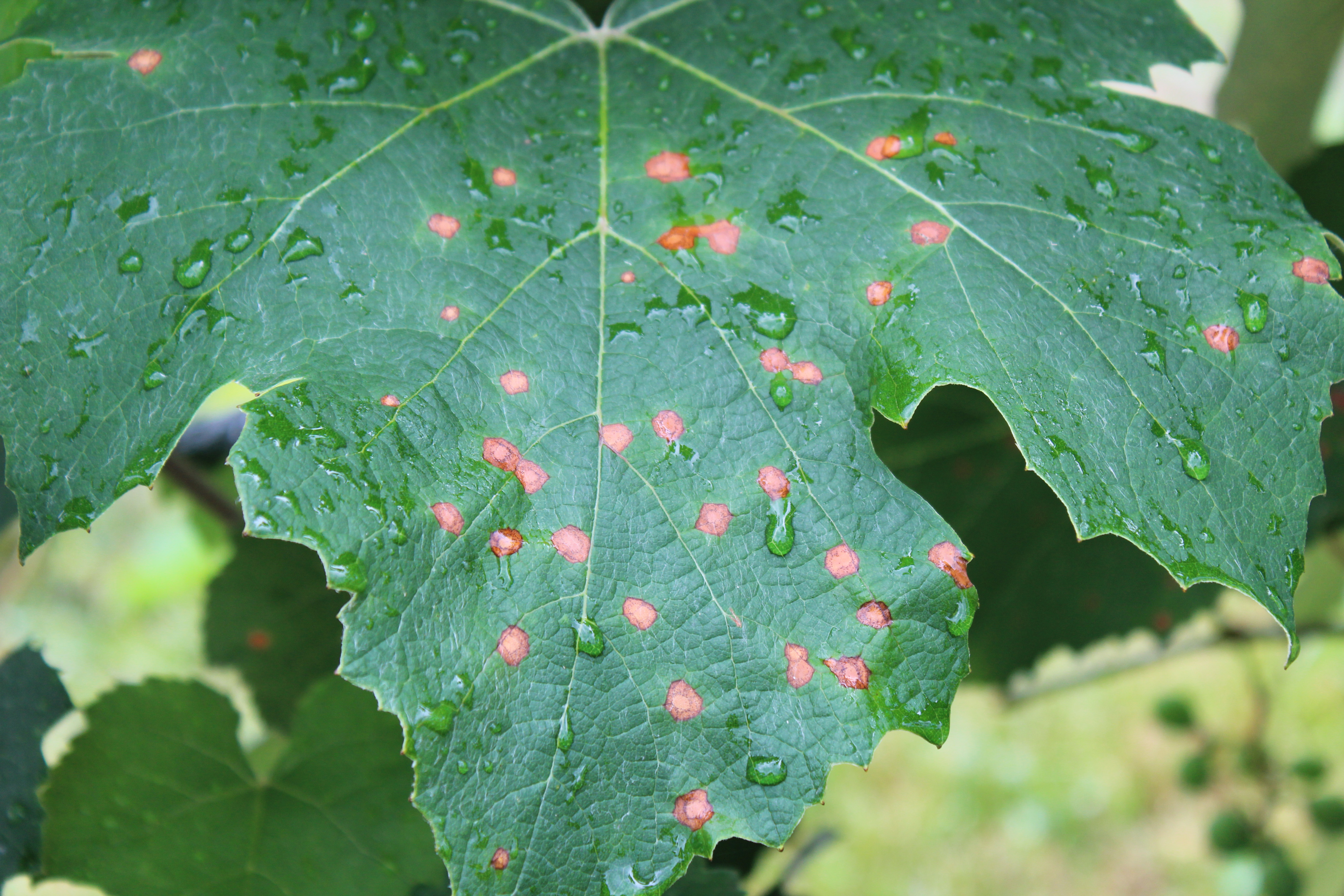
Black rot leaf spots.
(Photo: Nicole Gauthier, University of Kentucky)
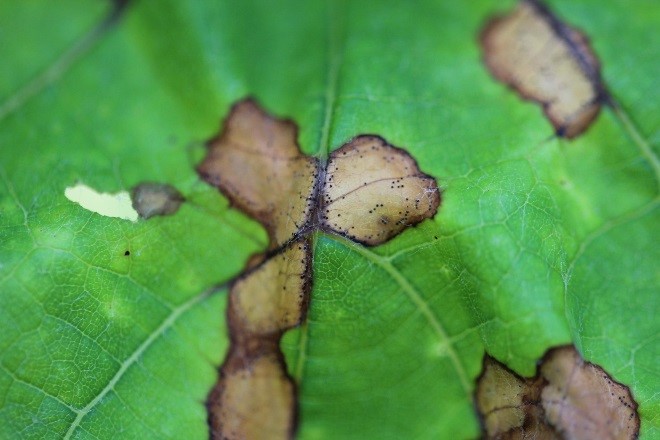
Close-up of black rot leaf spots with pycnidia around margins.
(Photo: Nicole Gauthier, University of Kentucky)
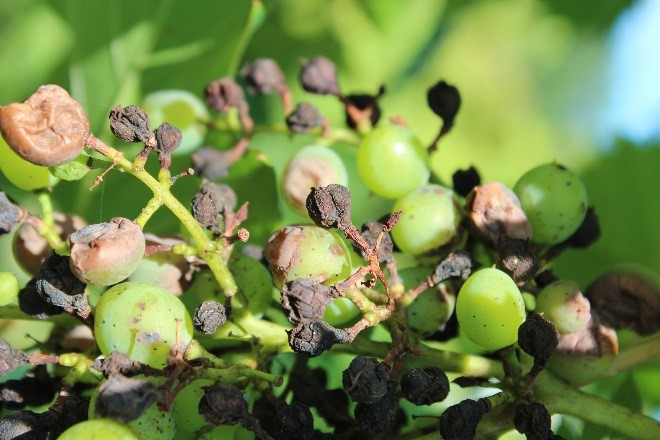
Black rot fruit symptoms (shriveled berries).
(Photo: Nicole Gauthier, University of Kentucky)
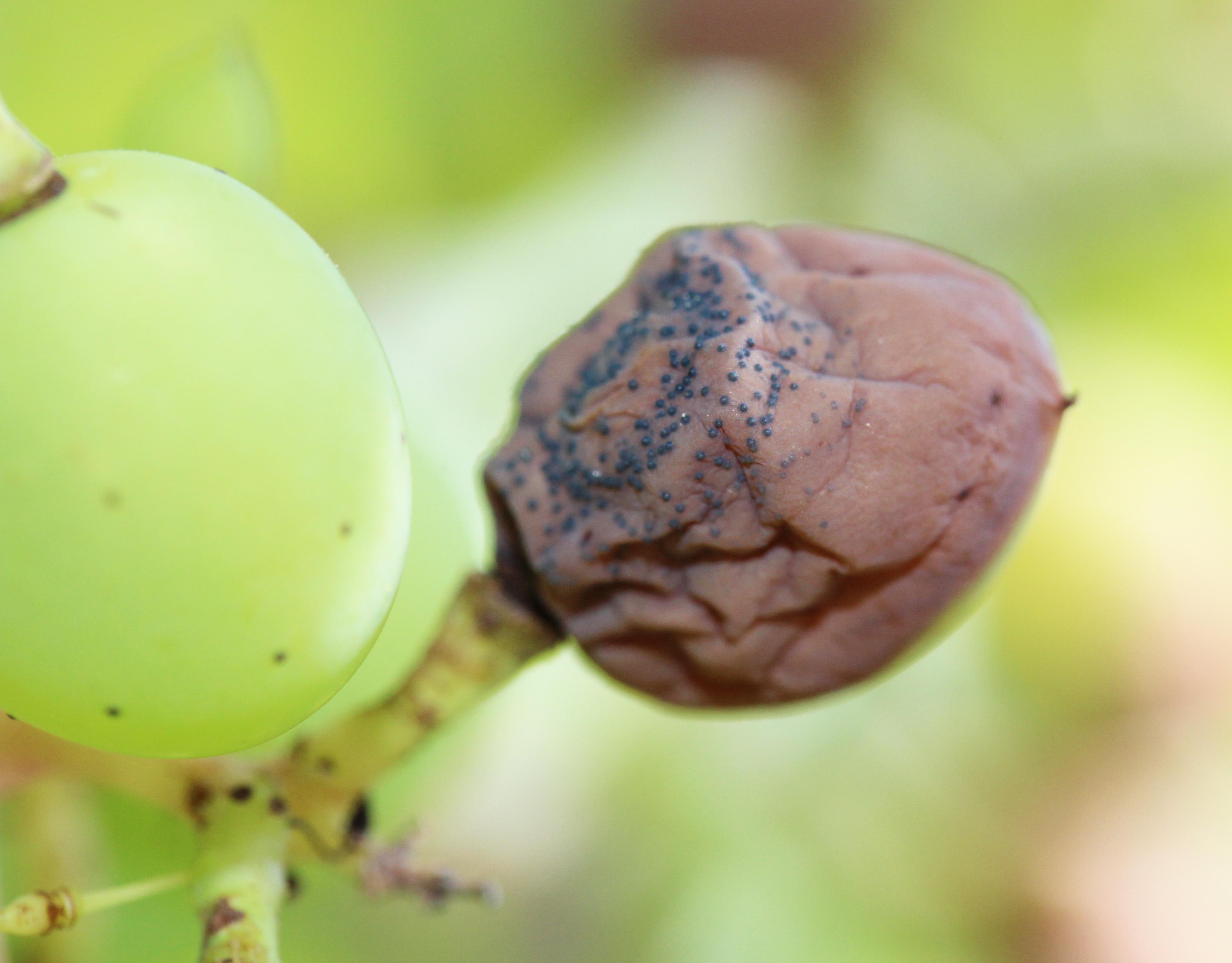
Close-up of black rot decayed fruit with visible pycnidia.
(Photo: Nicole Gauthier, University of Kentucky)
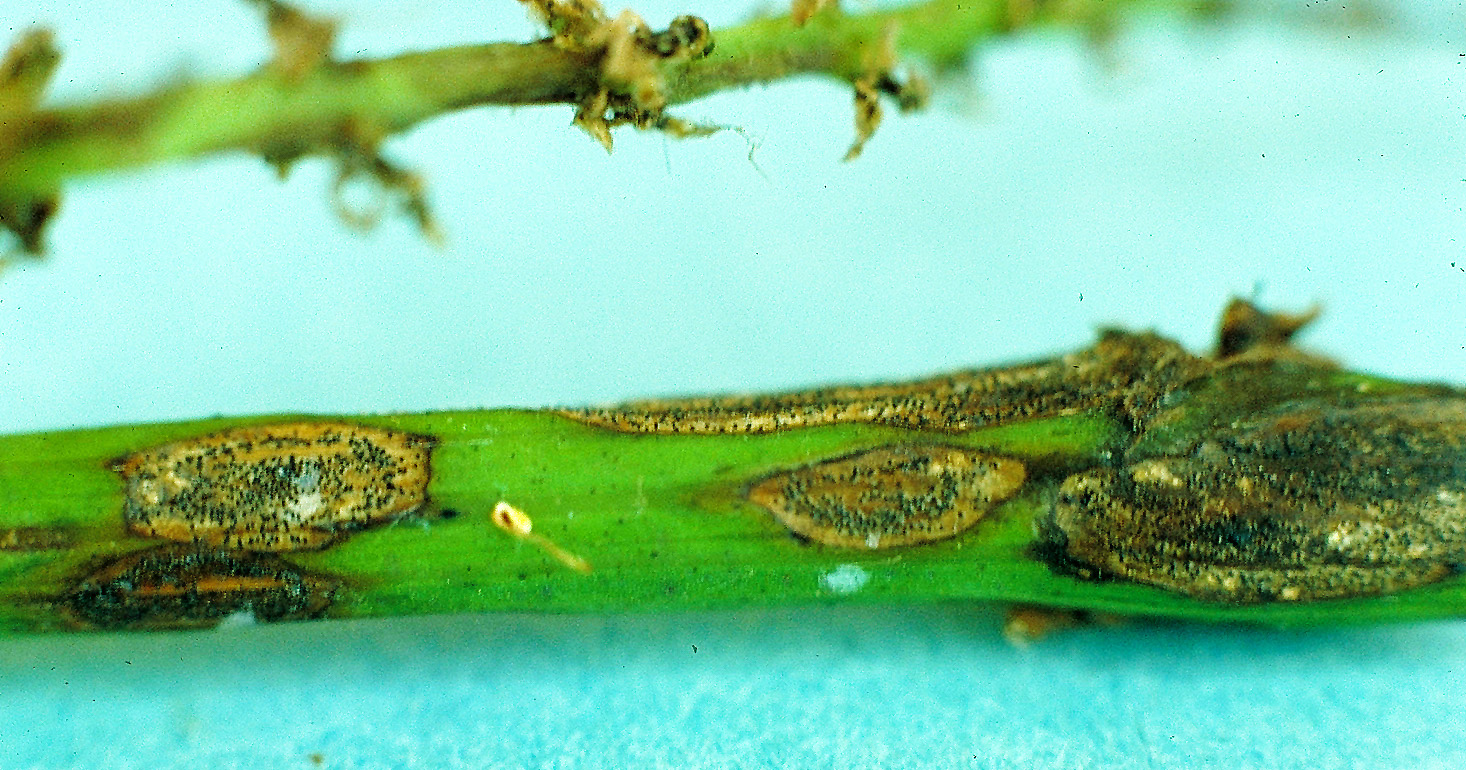
Black rot shoot lesions with visible pycnidia.
(Photo: Cheryl Kaiser, University of Kentucky)
Management:
- Practice proper sanitation (remove all infected berries, mummies, and infected tissue; destroy debris or discard away from plantings).
- Increase air circulation to encourage drying of plant tissues (pruning, thinning, spacing, managing weeds).
- Apply fungicides (especially early season applications to control primary infections).
